This is part of a long series of posts about the Sony a6300. The series starts here.
Pixel response non-uniformity, or PRNU, doesn’t get much notice these days. That’s because, with most modern cameras, it’s so low that it doesn’t affect normal photography. I didn’t expect the a6300 to be any different, but I looked at the PRNU anyway. There are two reasons for that. First, it’s the traditional first step in photon transfer analysis, and I’m about to do that for the camera. And second, because I thought that the Aptina conversion gain switching technology employed in the a6300 might affect PRNU, and I was curious to see whether that was true.
The Aptina technology configures the sensor in two different ways, depending on the ISO setting of the camera. In the a6300, below ISO 400, an additional capacitor is switched in parallel with each pixel, lowering the conversion gain and raising the full well capacity (FWC). Might variations in the additional capacitor cause greater PRNU, or is that capacitance better controlled than the high ISO capacitance, and would the PRNU go down at low ISO settings? Or would it make no difference whatsoever?
I made four each 128 exposure sets of a white card lit by two Wescott LED panels set to 5000K, with the camera set somewhat differently:
- ISO 100 (low conversion gain), single shot shutter mode
- ISO 400 (high conversion gain), single shot shutter mode
- ISO 100 (low conversion gain), continuous shutter mode
- ISO 400 (high conversion gain), continuous shutter mode
I used the Sony 90mm f/2.8 FE macro lens, set to f/8. Shutter speed was 1/50 second for the ISO 100 pictures, and 1/200 for the ISO 400 ones, which was slightly under a stop below clipping.
I developed all the images to raw color planes with DCRAW, brought them into Matlab, averaging each series as each new image was added, selected an 800×800 pixel central crop, relit the images with a 99×99 pixel equalization filter to get rid of lighting non-uniformity, normalized the variations to the average signal levels, and plotted the curves.
Here are the ISO 100, single shot curves for three raw color planes.
You can see that averaging 64 exposures seems to be enough to get rid of all the photon noise, which is uncorrelated image to image. 128 gives us a little extra margin.
If we boost the ISO to 400 to get the high conversion gain setting, here’s what we see:
The PRNU gets worse, but, by the time we get to 128 samples, not much worse.
In continuous mode, ISO 100:
Pretty much the same as single shot mode.
In continuous mode, ISO 400:
Also pretty much the same as single shot mode.
Averaging all the raw channels for each test case converting to percent, and plotting as a bar graph, we get this:
My conclusions:
- Shutter mode doesn’t affect PRNU,
- PRNU is slightly better at lower ISOs. Presumably, this would apply to all ISOs 320 and below.
- PRNU is slightly worse at higher ISOs. Presumably, this would apply to all ISOs 400 and above, at least until Sony starts doing digital filtering.
- PRNU is in all cases so low as to be negligible in normal photography.
I’m trying hard to find a drawback for users to the Aptina technology, but I’m not finding one. It makes the chip more complicated, but it sure does the job. It may lower the fill factor, but I have no way of testing that.
It is sometime instructive to look at equalized renditions of averaged light-field images to get a sense of the pattern of a camera’s PRNL. The a6300, or, I should say, my a6300, shows a strong horizontal pattern. Here is one of the green planes:
Don’t draw any conclusions from the amount of white or black; the image is stretched so that the whole gray axis is used.
The patterning on the other three layers is similar, but not identical:
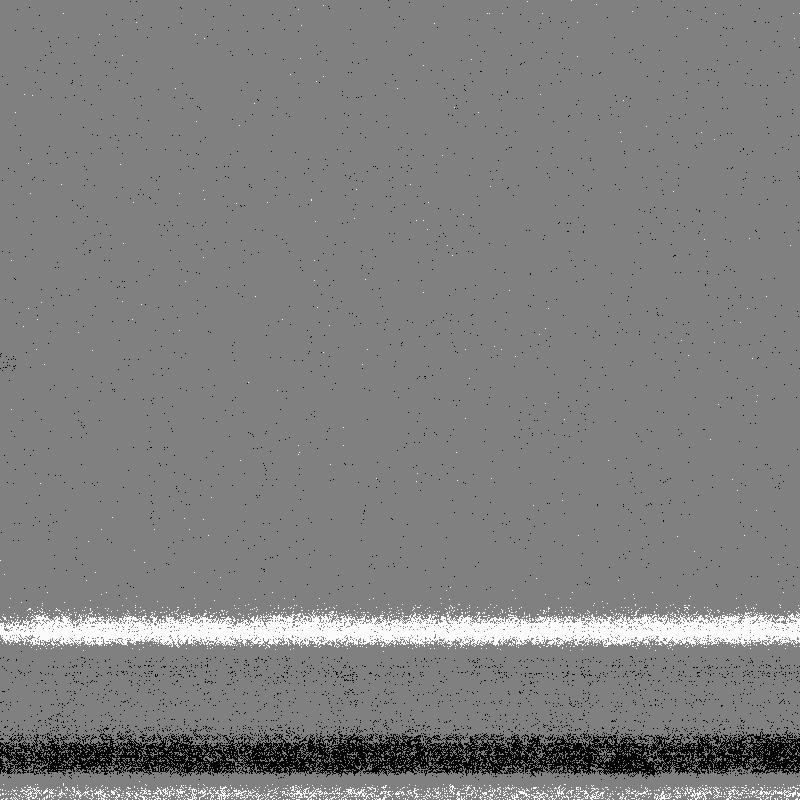
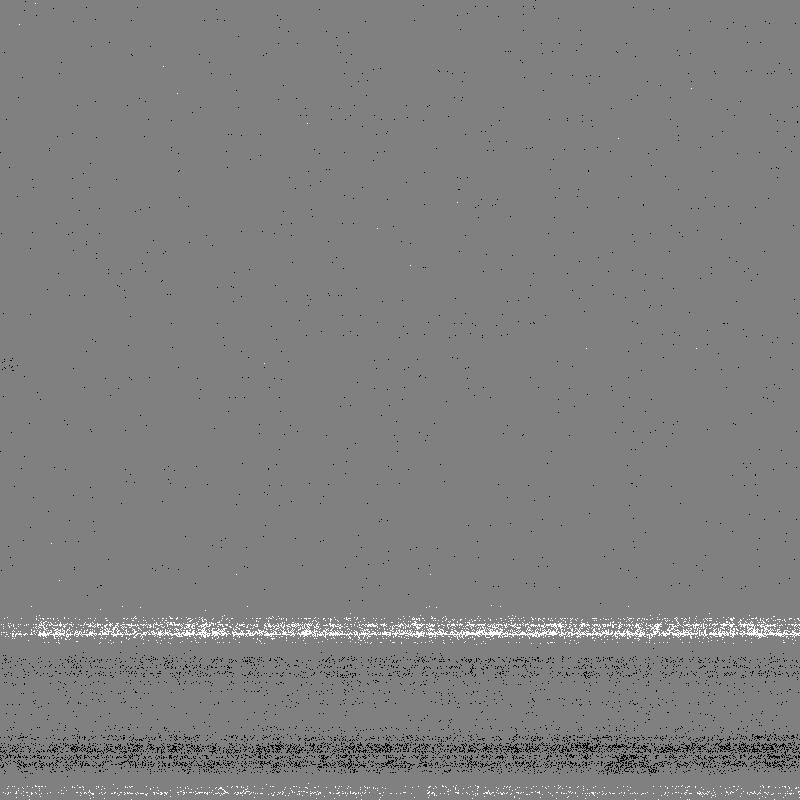
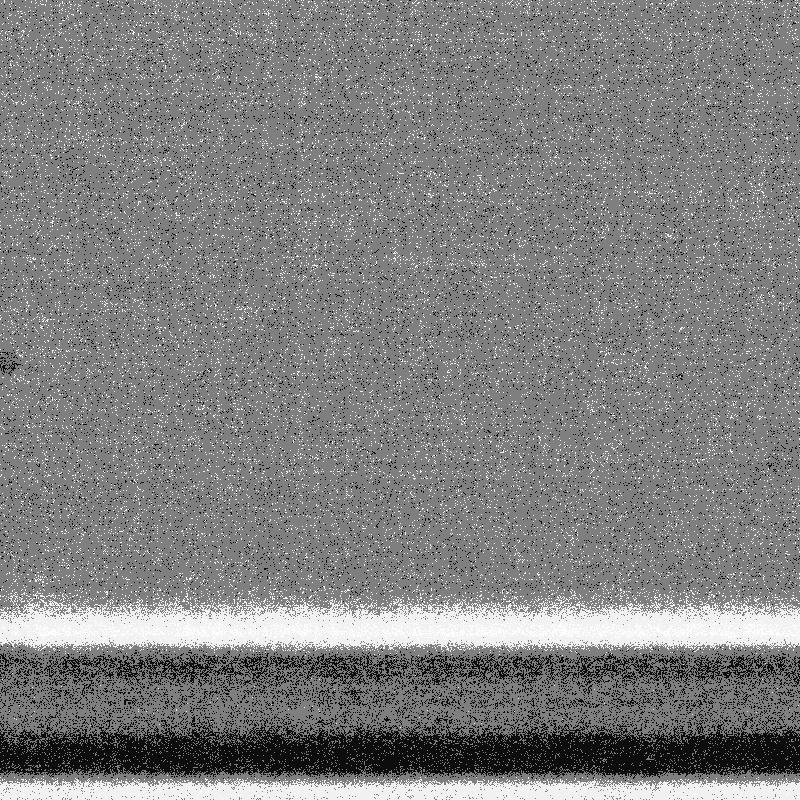
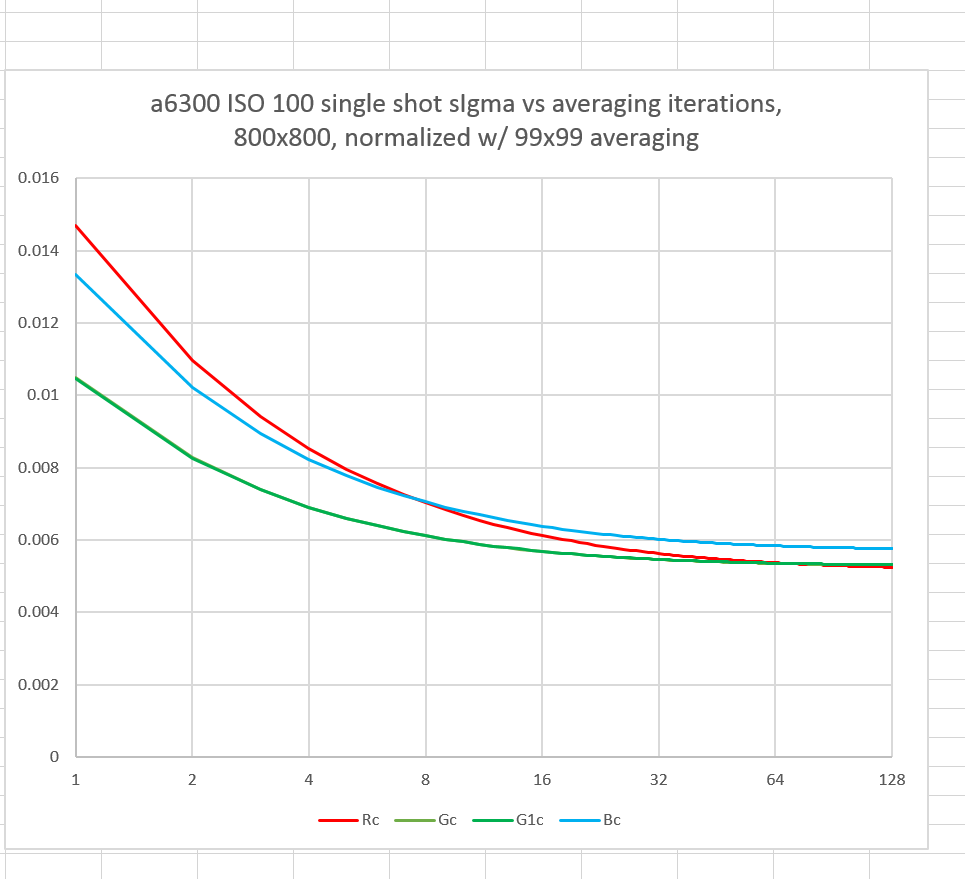
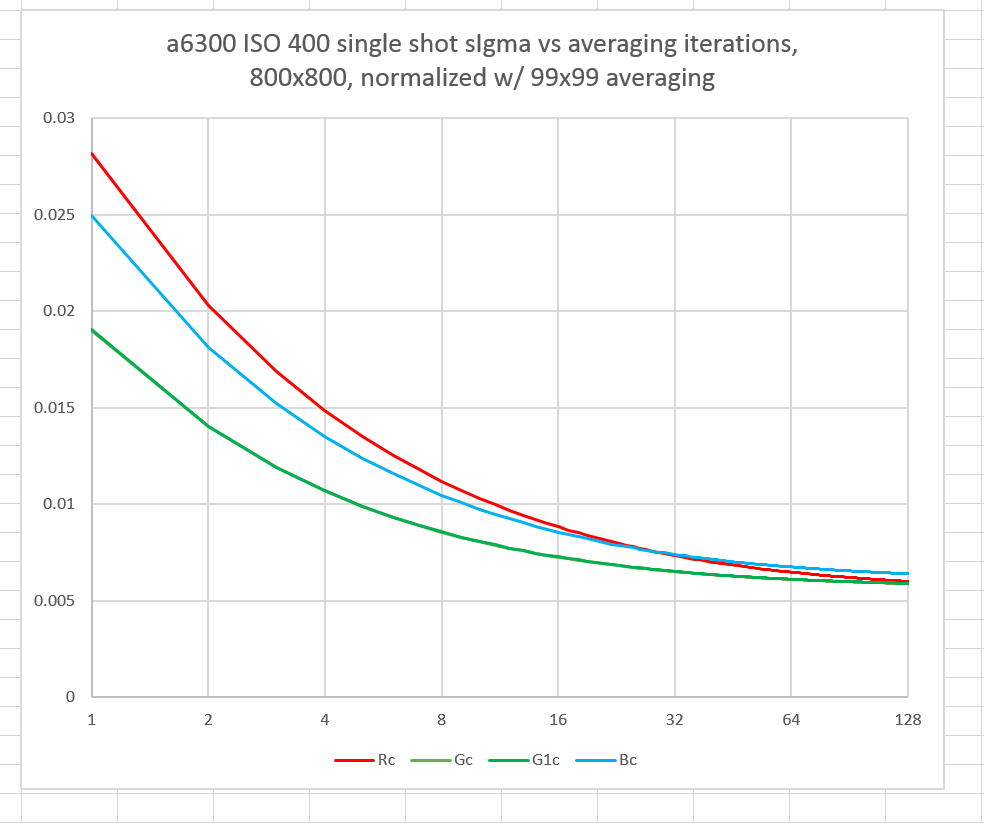
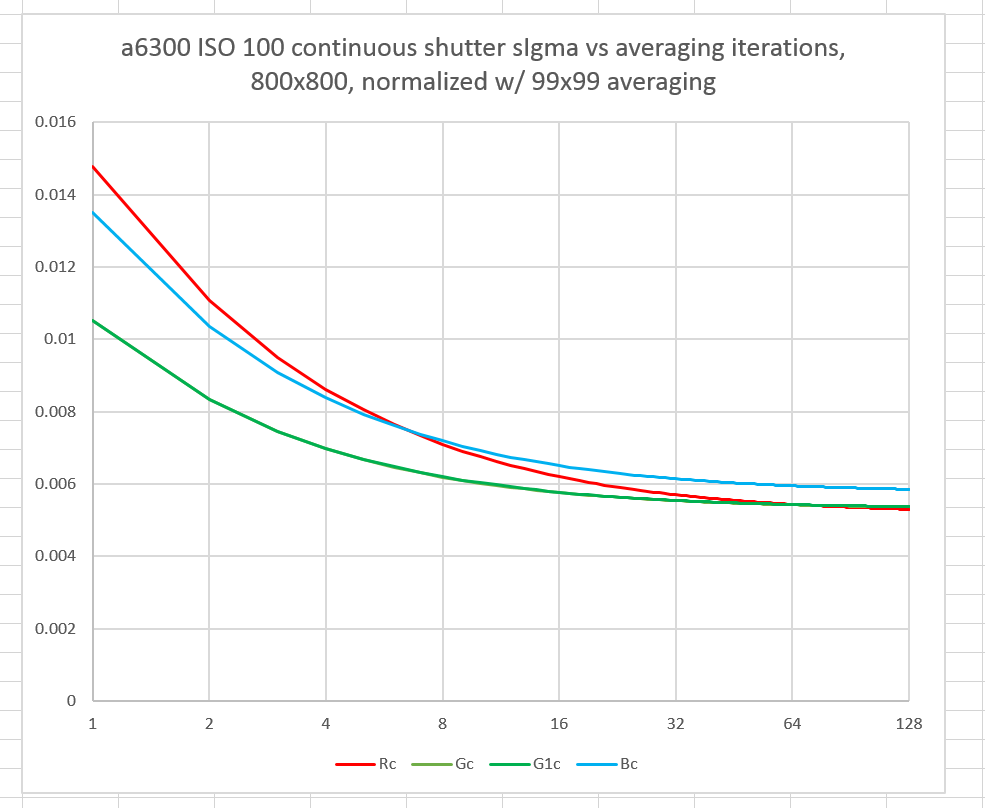
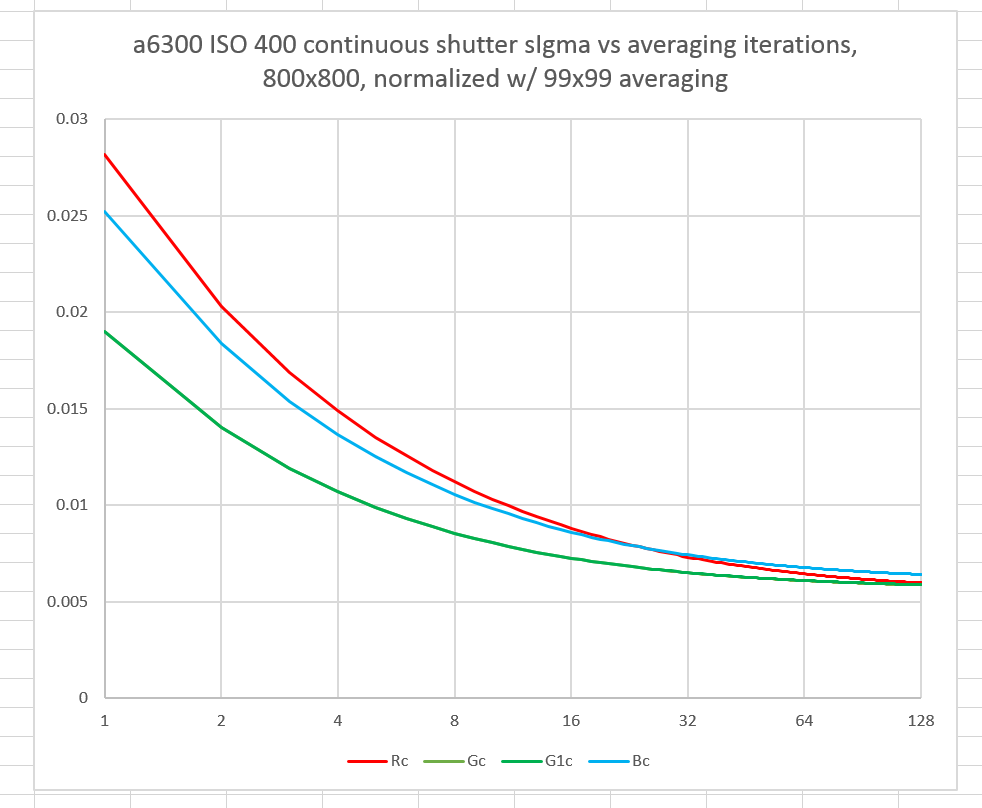
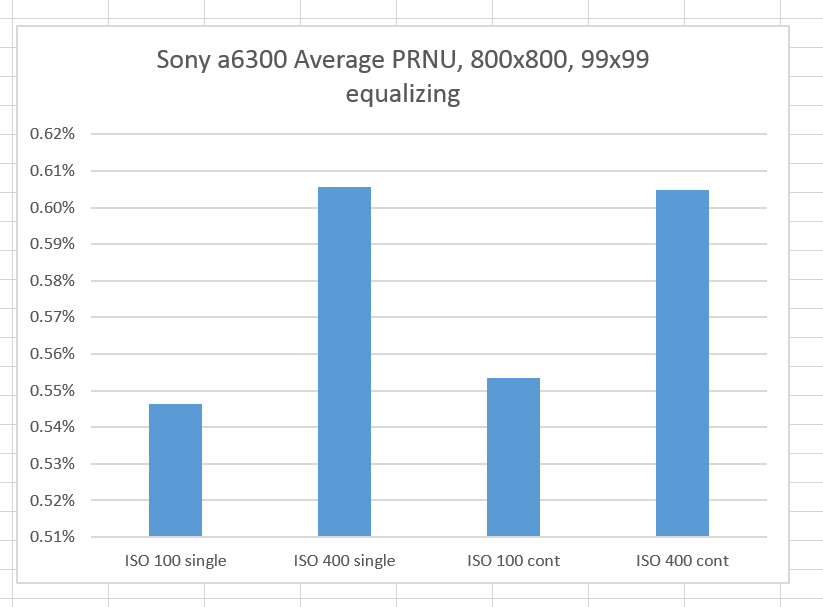
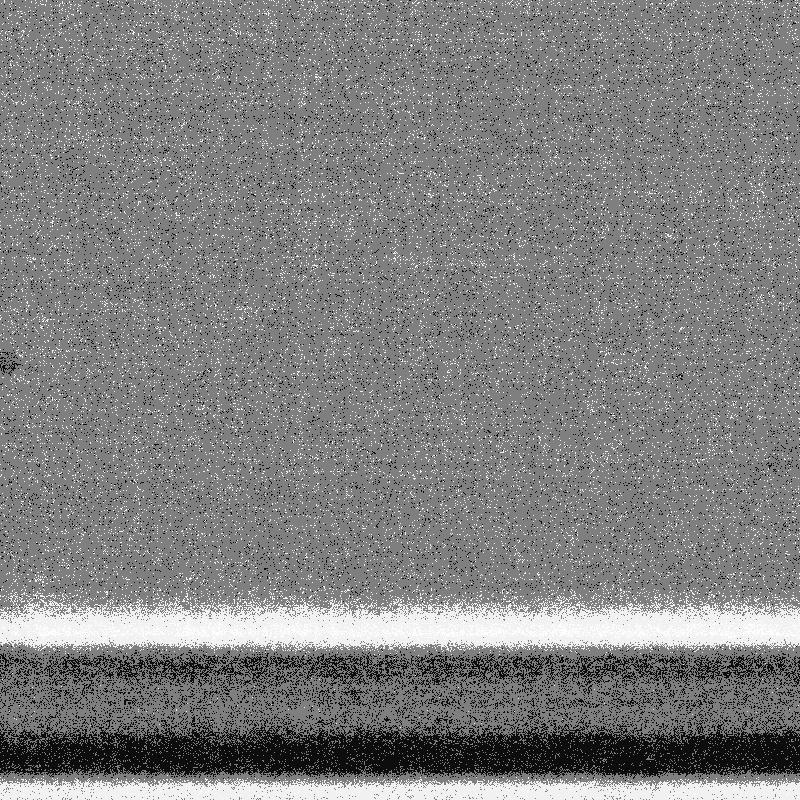
Leave a Reply